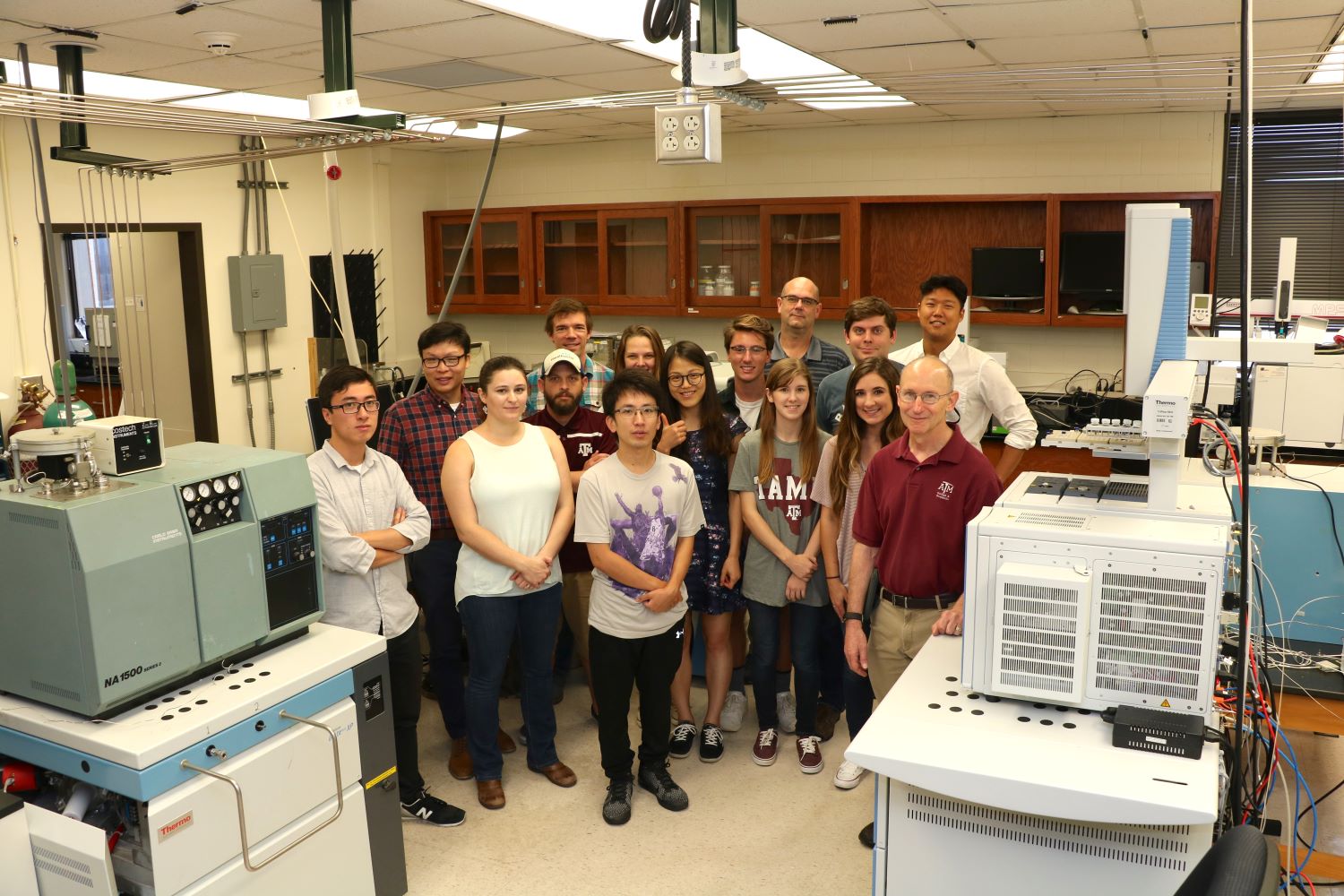
Stable Isotope Geosciences Facility
Established on the TAMU campus in College Station in 2009, the Stable Isotope Geosciences Facility (SIGF) is designed to provide accessible, reliable, and high-quality stable isotope measurements and training for faculty, staff, and students at Texas A&M and within the community. It is a facility where state-of-the-art methodologies and technological developments in stable isotopes can be applied to important societal problems related to energy, ecology, Earth history, and the environment.
Beyond the TAMU community, the SIGF has strong research links with scientists and students from other universities and industry who require accurate and precise measurements. The facility continues to be recognized for its quality work and research.
SIGF NEWS
SIGF announces new rates. See Rates, Sample Submission, & Payment Options in Menu items.
Recent Publications
DeLong, K. L., Palmer, K., Wagner, A. J., Weerabaddana, M. M., Slowey, N., Herrmann, A. D., Duprey, N., Martínez-García, A., Jung, J., Hajdas, I., Rose, N. L., Roberts, S. L., Roberts, L. R., Cundy, A. B., Gaca, P., Andrew Milton, J., Yang, H., Turner, S. D., Huang, C.-Y., Shen, C.-C., and Zinke, J., 2023, The flower garden banks Siderastrea siderea coral as a candidate global boundary stratotype section and point for the Anthropocene series: The Anthropocene Review, p. 20530196221147616.
Kim, B., and Zhang, Y. G., 2023, Methane Index: Towards a quantitative archaeal lipid biomarker proxy for reconstructing marine sedimentary methane fluxes: Geochimica et Cosmochimica Acta, v. 354, p. 74-87.
Perez-Beltran, S., Zaheer, W., Sun, Z., Defliese, W. F., Banerjee, S., and Grossman, E. L., 2023, Density functional theory and ab initio molecular dynamics reveal atomistic mechanisms for carbonate clumped isotope reordering: Science Advances, v. 9, no. 26, p. eadf1701.
Kim, B., and Zhang, Y. G., 2023, Methane Index: Towards a quantitative archaeal lipid biomarker proxy for reconstructing marine sedimentary methane fluxes: Geochimica et Cosmochimica Acta, v. 354, p. 74-87.
Perez-Beltran, S., Zaheer, W., Sun, Z., Defliese, W. F., Banerjee, S., and Grossman, E. L., 2023, Density functional theory and ab initio molecular dynamics reveal atomistic mechanisms for carbonate clumped isotope reordering: Science Advances, v. 9, no. 26, p. eadf1701.
